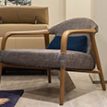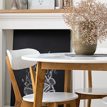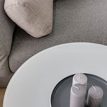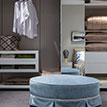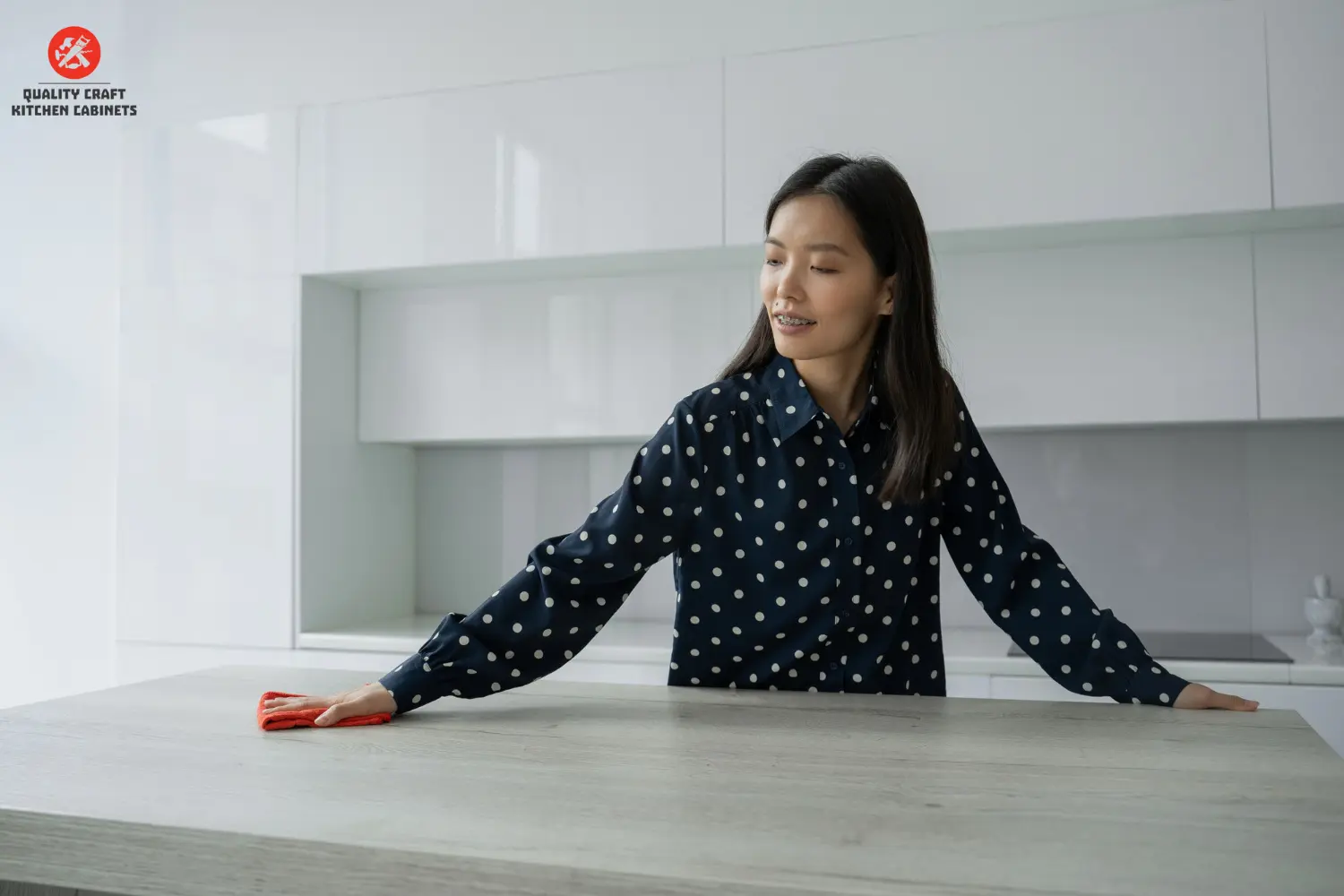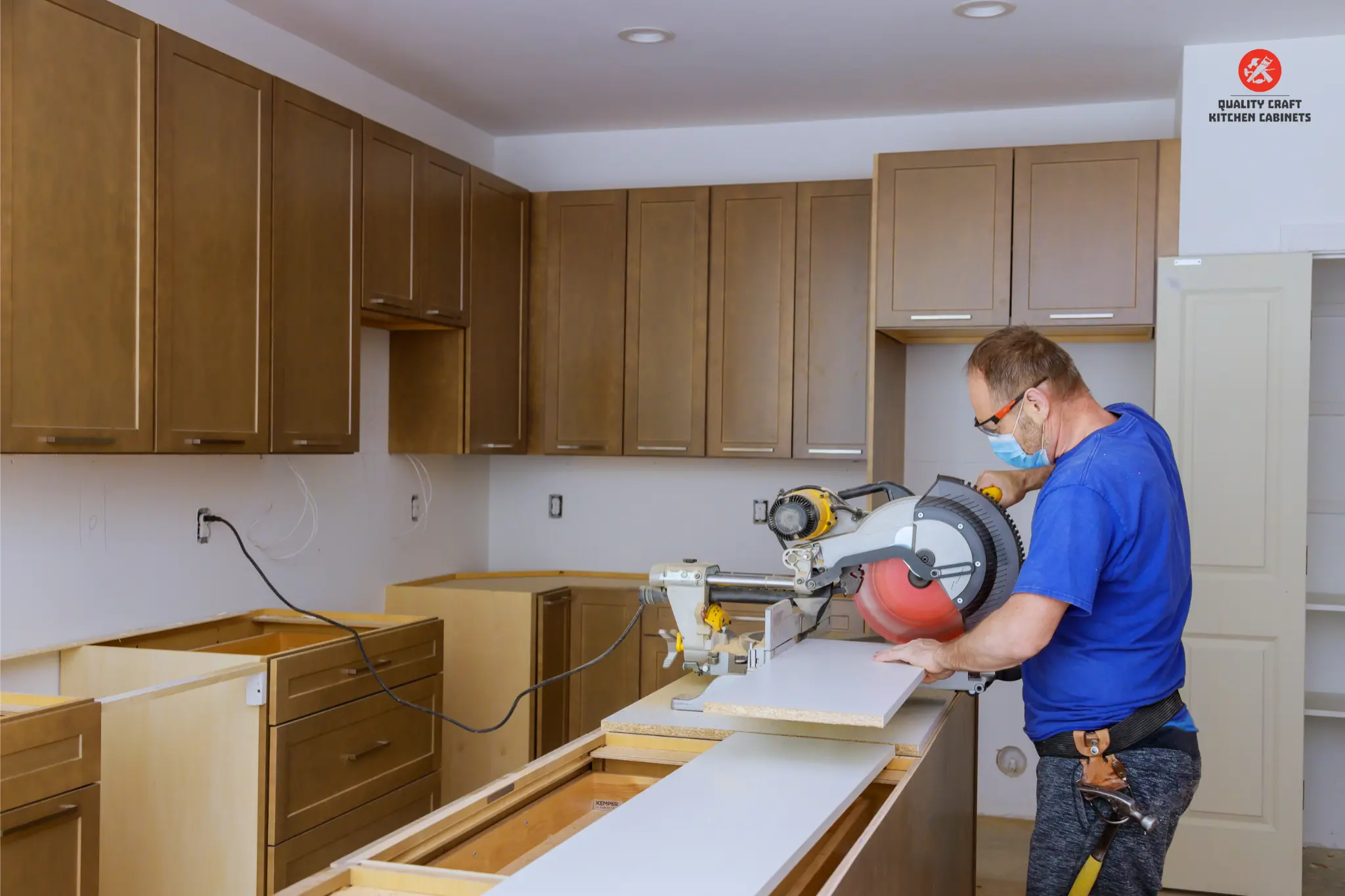Kitchen cabinets are the backbone of your kitchen, but they often take a beating from daily use. Grease, spills, and dust can quickly build up, making them look dull and worn over time.
The good news? A little regular care can go a long way in keeping them looking great and lasting for years. Proper maintenance doesn’t just protect your investment, it ensures your cabinets stay beautiful and functional for the long haul.
In this guide, you’ll learn simple and effective ways to clean and maintain your cabinets, no matter their style or material.
Dust Cabinets Regularly
One thing kitchen cabinet makers Calgary suggest is keeping your kitchen cabinets clean and dust-free all the time. The best part, it does not have to be a tough task.
It’s an easy way to keep your space looking fresh and well-maintained, especially here in Calgary, where dust can quickly settle. If ignored, dust can mix with grease from cooking, leaving behind stubborn buildup that’s much harder to clean.
To make it simple, here’s how you can stay on top of it:
- Dust your cabinets weekly to prevent buildup.
- Use a soft microfiber cloth to gently clean surfaces without scratching.
- Avoid abrasive sponges or rough materials, they can damage the finish.
- Stick to clothes specifically for dusting. Dishcloths or reused cleaning rags may contain detergents that can leave marks.
- If needed, use a mild, non-abrasive cleaner to gently remove any stubborn spots.
With these steps added to your weekly routine, you’ll save yourself from deep-cleaning headaches and keep your cabinets looking like new.
And for those hard-to-reach spots, like corners or detailed designs, a soft-bristle brush is your best friend. Also, make sure you avoid rough clothes or paper towels. These can damage the finish.
Wipe Spills Immediately
Spills are inevitable in any kitchen, but ignoring them can lead to lasting damage. In Calgary’s climate, spills can dry quickly, leaving behind sticky residue or stains that are difficult to remove. Worse, if liquids seep into cabinet seams or edges, they can weaken the material or cause warping over time.
The best approach is to wipe up spills as soon as they happen. Use a clean, damp cloth to gently clean the area, and for greasy or sticky spills, a mild, non-abrasive cleaner works best. Always dry the surface thoroughly afterward to prevent moisture from causing damage.
A quick response to spills not only keeps your cabinets looking great but also helps maintain their longevity and durability.
Use a Gentle Cleaning Solution
Using the right cleaning solution is essential to maintain your kitchen cabinets without damaging their finish. Harsh chemicals can strip coatings and discolor surfaces, so opt for gentle cleaners instead.
A DIY solution of warm water and a few drops of mild dish soap, such as Dawn, works well for everyday cleaning. For grease, mix equal parts white vinegar and water, but test on a small area first.
Store-bought options like the following are great choices:
- Murphy’s Oil Soap for wood
- Method All-Purpose Cleaner for laminates
- or Bona Cabinet Cleaner for streak-free results
Important note: Use a soft microfiber cloth, avoid soaking the surface, and dry thoroughly to prevent damage.
With regular care, your cabinets will stay beautiful and last longer.
Avoid Harsh Chemicals or Abrasive Cleaners
Harsh chemicals and abrasive cleaners can ruin your cabinets by stripping the finish, dulling the surface, or causing discoloration. To protect your cabinets, avoid using the following:
- Ammonia
- Bleach
- Abrasive powders
- Acetone or nail polish remover
- Strong degreasers
- Alcohol-based cleaners
Note: These products can weaken materials and leave permanent damage.
Instead, opt for mild solutions like dish soap and water or cleaners specifically designed for cabinets. Using the right products ensures your cabinets stay in great condition for years to come.
Clean Grease Buildup with Mild Degreasers
Grease buildup on kitchen cabinets is common, but it doesn’t have to be a hassle to clean. Follow these simple steps to remove grease effectively while protecting your cabinets:
Step One: Prepare a Gentle Solution – Mix warm water with a few drops of dish soap or use a mild cabinet-safe degreaser like Method Heavy Duty Degreaser. For natural cleaning, dilute white vinegar with water.
Step Two: Clean the Greasy Areas – Dip a soft cloth or sponge into the solution and gently wipe the greasy spots. Avoid scrubbing too hard, as it can damage the finish.
Step Three: Rinse and Dry – Wipe the area with a clean, damp cloth to remove any residue. Then, dry the surface thoroughly with a soft towel to prevent water damage.
With these simple steps, you’ll keep your cabinets looking clean, fresh, and ready to handle the demands of a busy kitchen.
Polish Wood Cabinets Periodically
Wood cabinets are one of the highlights of any kitchen, but over time, daily wear can dull their shine and diminish their rich, natural beauty. Polishing them periodically is essential to keep them vibrant and to protect the finish from damage.
Use a high-quality wood polish like Howard Feed-N-Wax or Murphy’s Oil Soap. These products nourish the wood, prevent drying or cracking, and create a protective barrier against dust and grime. Simply apply the polish with a soft, lint-free cloth, buff gently, and watch the shine return.
For best results, polish your cabinets every six months or adjust based on how your cabinets look and feel. This simple habit will keep them stunning for years and ensure your kitchen remains warm and inviting.
Check and Tighten Hardware
Over time, cabinet hardware like handles, knobs, and hinges can loosen due to daily use, causing misaligned doors or rattling drawers. Ignoring this can lead to further wear or even damage to your cabinets. The good news? Tightening and maintaining your hardware is quick and easy.
Start by inspecting all your cabinet hardware every 2-3 months. Use a screwdriver to tighten any loose screws on handles or knobs. For hinges, check if the doors are sitting properly. If they’re sagging or uneven, adjust the hinge screws to realign them.
Tip: Consider applying a drop of lubricant to the hinges to prevent squeaking and ensure smooth operation.
Protect Cabinets from Excess Moisture
Excess moisture is one of the biggest threats to kitchen cabinets, especially in areas like under the sink or near dishwashers.
Over time, prolonged exposure to water can cause warping, peeling, or even mold growth, damaging both the appearance and structure of your cabinets. Protecting them from moisture is essential for their longevity.
Here’s how you can prevent moisture damage:
- Wipe up water spills immediately, especially around sinks and countertops.
- Use mats or liners in areas prone to leaks, such as under the sink, to catch excess water.
- Ensure proper ventilation in your kitchen by using an exhaust fan while cooking to reduce humidity levels.
- Regularly check for plumbing leaks and fix them promptly to avoid prolonged exposure to water.
Taking these simple steps will not only protect your cabinets but also help preserve the beauty and functionality of your kitchen for years to come.
Use Shelf Liners for Added Protection
Shelf liners are a simple yet effective way to protect your kitchen cabinets from scratches, stains, and moisture. They act as a barrier between your cabinet surfaces and the items you store, preventing damage over time and making cleanup easier.
When buying, make sure you choose non-slip, waterproof shelf liners for areas prone to spills, like under the sink or where you store oils and sauces. And when it comes to the other cabinets, cushioned liners work well to prevent scratches from heavy dishes or pots. Shelf liners also keep your items in place, reducing the risk of shifting or breakage.
Try to replace liners every year or as needed to keep them fresh and functional.
Inspect and Repair Damage Promptly
Inspecting and repairing cabinet damage promptly is essential to maintain their appearance, functionality, and lifespan. Over time, daily use, moisture, and general wear can lead to various issues. Once you identify and address these problems early, you can avoid costly repairs or replacements down the line.
10 common cabinet damages you need to look out for:
- Loose or broken handles/knobs
- Hinges that are loose, squeaky, or misaligned
- Warped or swollen cabinet doors due to moisture
- Peeling or chipped paint/finish
- Cracks or dents in the wood or laminate
- Water stains or discoloration, especially under sinks
- Drawers that stick or don’t slide smoothly
- Sagging shelves caused by overloading
- Gaps or misalignments between cabinet doors
- Signs of pests, such as holes or chew marks
Use this checklist during your routine inspections to ensure nothing gets overlooked:
- Check all handles and knobs for tightness; tighten or replace if needed.
- Inspect hinges for squeaks or misalignment; adjust or lubricate as necessary.
- Look for any warping or swelling, particularly near sinks or appliances.
- Examine the paint or finish for peeling, chipping, or fading.
- Inspect wood or laminate surfaces for cracks, dents, or scratches.
- Look for signs of water damage, including stains, discoloration, or dampness.
- Test drawers to ensure they slide smoothly and check for broken tracks.
- Assess shelves for sagging or signs of strain; replace if needed.
- Ensure doors close properly and align evenly with surrounding cabinets.
- Check for any signs of pest activity or structural issues inside cabinets.
Performing regular inspections and addressing these issues quickly will help keep your kitchen cabinets in top condition, ensuring they stay functional and beautiful for years to come.
Final Thoughts
Taking care of your kitchen cabinets doesn’t have to be overwhelming. With regular inspections, a bit of maintenance, and prompt repairs when needed, you can keep them looking stunning and functioning perfectly for years. Remember, your cabinets are a vital part of your kitchen’s design and functionality, so giving them the attention they deserve will ensure they remain a lasting centerpiece in your home. A little effort today goes a long way toward a beautiful, long-lasting kitchen you’ll love.

